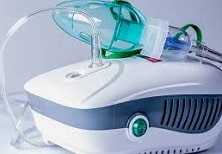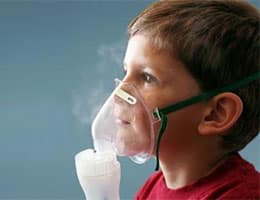 Nebulization is the act and result of nebulizing : causing a liquid to become a kind of cloud of very small particles . This is a common medical practice for the treatment of respiratory problems.
Nebulization is the act and result of nebulizing : causing a liquid to become a kind of cloud of very small particles . This is a common medical practice for the treatment of respiratory problems.
In medicine , nebulization consists of delivering a therapeutic substance or drug in combination with a saline solution or other liquid medium. Thanks to the use of oxygen or another gas, a vapor is created that the patient must inhale.
Nebulization is usually used in the case of children who suffer from a respiratory disease . This simplifies the delivery of medications and the nebulization action itself helps nasal secretions become more liquid and can be eliminated more easily.
Although each person may have a different relationship with this method of delivering liquid substances, children generally enjoy nebulization because it relaxes them, in part due to the noise the device makes when it is in operation. Furthermore, if the elderly manage to prevent them from associating the process with medical treatment , it can even be fun, even if there are serious reasons for its use.
Nebulization is also an important resource when the patient cannot use another inhalation system for psychological or physical reasons; when a high dose of a drug must be provided via the bronchopulmonary route; or when the drug in question is not available in any format other than liquid.
The device used to perform nebulization is called a nebulizer . This machine has a compressor, a vaporization chamber, a dosing chamber, a tube, and a pipette or inhalation mask.
The air enters the nebulizer through an opening that has a filter to prevent the passage of dust, lint and other particles. After traveling through the compression chamber, the already compressed air is sent through a tube to the dosing chamber, where the therapeutic substance is agitated to generate droplets. These droplets are then drawn into the mask, which the patient must place in the airways for inhalation.
 Before the invention of the electric motor, there were already certain methods of drug delivery through inhalation . For example, more than four millennia ago, in Egypt, India and China, vapors from certain plants were used to treat respiratory problems. The process consisted of preparing a mixture of herbs and heating it on a stone. One of the effects they sought through this practice was the relaxation of the muscles of the bronchi.
Before the invention of the electric motor, there were already certain methods of drug delivery through inhalation . For example, more than four millennia ago, in Egypt, India and China, vapors from certain plants were used to treat respiratory problems. The process consisted of preparing a mixture of herbs and heating it on a stone. One of the effects they sought through this practice was the relaxation of the muscles of the bronchi.
Already in the second half of the 19th century, spas marked the beginning of inhalation therapy as we know it today, since nebulizations emerged then. In 1849, for example, the doctor Auphan built a room in Euzet-les-Bains, France, in which patients could receive steam treatments thanks to a mechanism that caused the collision of a column of water against a wall to produce an aerosol .
Two decades earlier, scientists Schneider and Waltz had created the hydroconion , a sprayer capable of reducing a liquid substance to a rain similar to that produced by a nebulizer. In several Swiss sanatoriums, hydroconion was used to help tuberculosis patients breathe; To do this, they collected water in the Mediterranean Sea.
In 1856, a French doctor named Sales-Girons improved the hydroconion in an attempt to create a portable inhaler for use at the spa of Perrefonds-les-Bains , where he prepared a room with vaporized mineral water for nebulization treatments.
